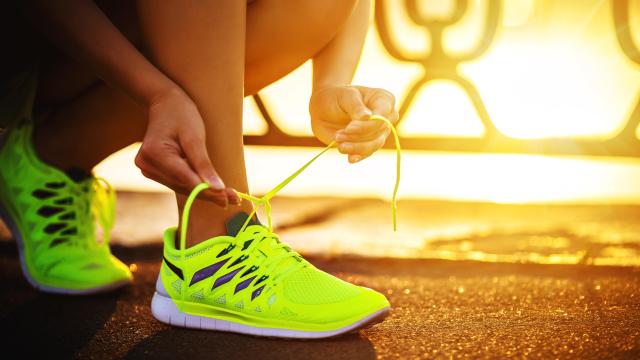With the overwhelming amount of features advertised on different running shoes, it’s difficult to parse out what does and doesn’t matter for your comfort and performance. Last week, we talked about the importance of heel-toe drop, and today, we’re talking stability.
We’ve previously hammered home the fact that most people shouldn’t overthink their running shoes. At the same time, if you’re prone to overpronation (aka, excessively rolling your foot inward), finding the right shoe fit could improve your comfort. Here’s what to know about stability running shoes and whether or not they’re the right choice for you.
What are stability running shoes?
When you’re shopping around for a pair of running shows aimed at adjusting your support, the main types of offerings are going to be stability or motion-control shoes. These types of speciality shoes both address the same issue (just to different degrees): Pronation, or inward rolling when the foot hits the ground. Every runner pronates to some extent, but overpronation can lead to injury over time.
Stability shoes provide arch support to help runners who overpronate. Similarly, motion control shoes are designed to support runners who clock in at higher weights, have flat feet, or suffer more serious overpronation. Both types of shoes are more rigid (and often heavier) than neutral running shoes, which advertise minimal support and a more “natural” ride.
Do stability and motion control matter for you?
Every runner naturally pronates to some degree, and it isn’t always a cause for concern. If you suffer from overpronation, you might need some sort of stability or motion control shoe to provide extra support and reduce potential injury. More specifically, stability shoes are recommended for people with a normal arch and more mild overpronation, while motion control shoes are recommended for people with flat feet and more serious overpronation.
To test if you’re in need of stability shoes, examine your current pair. An excessive wear pattern on the inside edge of the bottom (compared to the outside edge) is a clear sign that you’re rolling inward too much and will benefit from the support of stability or motion control shoes.

Leave a Reply
You must be logged in to post a comment.